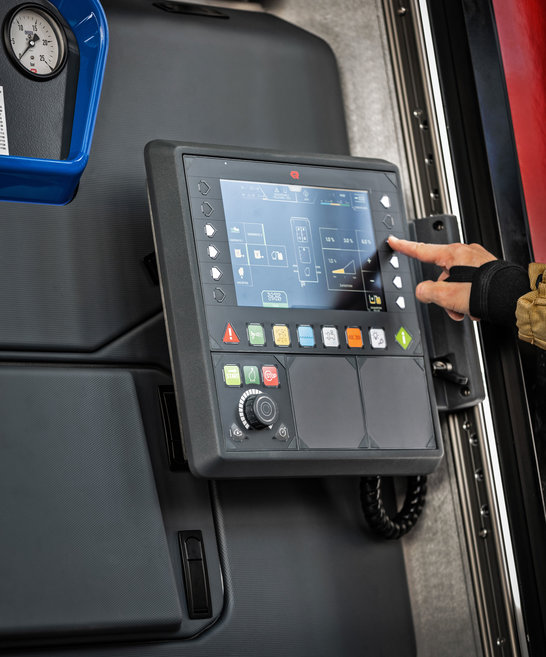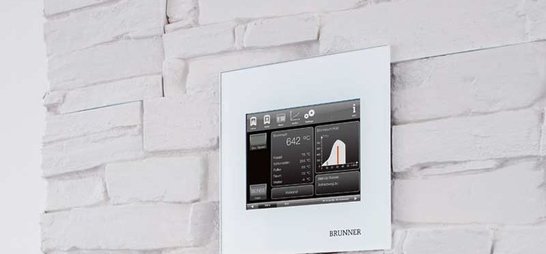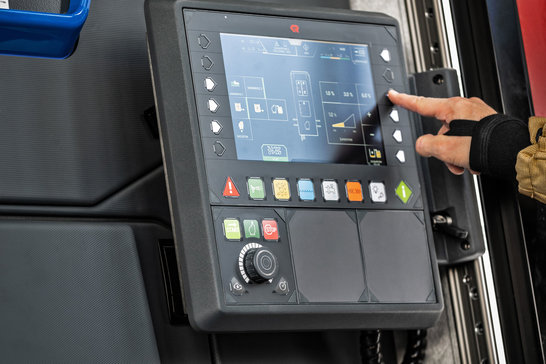Technology
Human Machine Interfaces - the first impression counts
They are the directly visible part of a machine with which humans interact and with which they can intervene if necessary: HMIs (Human Machine Interface). Smartphones are setting design trends today - so too in industry & automation.

What is meant by HMIs?
The abbreviation HMI stands for Human-Machine-Interface. This means something like human-machine interface. HMIs are the directly visible part of a machine with which humans interact and with which they can intervene if necessary. Today, smartphones are undoubtedly setting design trends - and this is also the case in industry and automation. First impressions count and high-quality, sleek glass surfaces are the measure of all things.
Seamless integration of the surface material with the electronics and sensor technology are basic requirements for an appealing, functional HMI. All these requirements demand special know-how about modern materials, as well as about display and touch technology.
But familiar mechanisms from the consumer world are also pushing their way into industry in terms of operation. Appealing icons, intuitive, fluid user guidance are the benchmark. We are used to jerk-free operation of the end devices used to enable simple interaction. Wiping, multi-finger gestures and voice control are standards that are now also expected in embedded systems.

Attractive displays with high functionality
Graphic displays convey the first impression of a device. There are many requirements to consider when selecting the right display for an HMI:
- Brightness, contrast, brilliance and color spectrum
- Control, software and backlighting
- Shock resistance, impermeability, scratch resistance and surface material
- Use indoors and outdoors, as well as in sunlight
- Bonding, mounting and temperature range
- Long-term availability and price
Optimal operability - depending on the area of application
When it comes to input systems and operation, it is important to find the right combination of intuitive touch operation or other input elements, such as joysticks, rotary-push encoders or haptic keys. Above all, it is important to consider the area of application right from the start. In the case of medical devices, for example, it is important to ensure complete cleaning and disinfection.
Construction site equipment and devices used in commercial vehicles must be easy to operate even when wearing gloves. When used outdoors, liquids or environmental influences must not lead to incorrect operation. It has also become normal for us to send search commands on our cell phones by voice command. Whether touch-free gesture control or multilingual voice recognition. For use in the HMI, it is particularly important to be able to separate one's own speech from background noises.

HMIs made by Ginzinger
Ginzinger electronic systems has been a reliable partner for the professional implementation of customer-specific HMIs for 30 years. The company has years of know-how in hardware and software development, as well as the production of functional device interfaces. As a full-service provider, Ginzinger is responsible for the complete process of HMI development. From LED visualization to graphic display, intuitive operation is created for customer devices. No matter if switch or touch surface. Many years of display experience, countless realized display projects for various target markets and a competent supplier network enable individual human-machine interfaces of the future.
Multifunctional HMI for fire engines
A successful example of a successfully implemented Ginzinger is the intuitive operating system "RBC LCS" for fire engines of Rosenbauer International AG. The requirements for the operating system were extensive: A robust and universal operating system was sought for use on and in the fire truck, which is used worldwide in harsh ambient temperatures from -30 degrees to +65 degrees. Demanding standards, such as those for leak tightness, shock and vibration, had to be met.
The operating system had to have a scratch-resistant, brilliant touch display that could be operated without any problems even in all weather conditions outdoors and with firefighters' gloves. Around the touch display, up to twenty illuminated buttons provide modular, individually configurable operation of lighting, signaling systems, built-in modules, and many other functions. One of the greatest challenges for the development of the operating system turned out to be the selection of a suitable display. The high environmental demands on the display and the requirements for brightness, contrast, operability with gloves and long-term availability quickly limited the selection of possible suppliers.
The display also had to always be optimally readable from all sides in the fire truck - even in the brightest sunlight and with polarized sunglasses - at a viewing angle of up to 85°. Automatic and manual day/night switching, a minimum resolution of 1280x800 and brightness of 1000 cd/m2 were prerequisites.

In accordance with the Ginzinger slogan "Converting Challenges into Solutions", after an intensive search the Ginzinger project team found a suitable manufacturer to supply the display in a customized 10" variant with an extended temperature range. Ginzinger's many years of know-how in the development of graphic operating systems turned out to be a great advantage in the search for a suitable and robust display for this unusual application.

